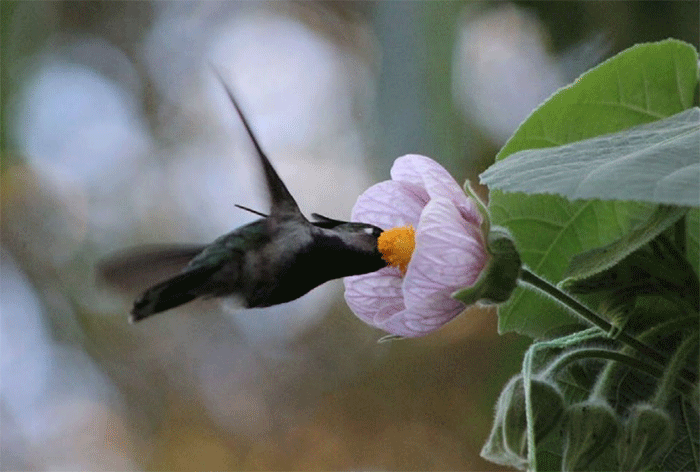Teamwork Between Bats and Hummingbirds Keeps Mountain Flowers Reproducing
Brazilian researchers discover that both bats and hummingbirds pollinate the same high-altitude plant, ensuring its survival across changing seasons and conditions.

Two pollinators, one plant
In the misty highlands of Brazil’s Atlantic Forest, a single shrub has found a way to thrive by appealing to two very different partners. New research published in Ecology and Evolution by Isis Paglia and colleagues from the Rio de Janeiro Botanical Garden reveals that Callianthe sellowiana – a rare montane treelet – relies equally on both bats and hummingbirds to reproduce. When either group is excluded, fruit and seed production fall, but when both are active, reproduction soars. The finding highlights how mixed pollination systems can act as ecological insurance in unpredictable environments.
A flower for day and night
Callianthe sellowiana grows at elevations around 2,000 m in Itatiaia National Park, Brazil’s oldest national park. Its bell-shaped flowers bloom for three days and open both day and night, shifting subtly in form across the 24-hour cycle. By day, the flowers are narrower, better fitting the slim bills of hummingbirds. At night, they widen, making it easier for nectar-feeding bats to reach the nectar with their elongated snouts and tongues. The team found that the flowers’ colours – ranging from white to deep purple – reflect mostly red and green wavelengths, making them visible to both pollinators under the bright daylight or dim twilight of the mountains.
Sharing the work
Over 50 hours of observation revealed five hummingbird species and one nectar-feeding bat (Anoura cf. caudifer) visiting the flowers. Daytime and night-time exclusion experiments confirmed that both pollinators are equally effective: when either group was excluded, fruit and seed set dropped by up to two-thirds. Only when both were present did the plants reach their full reproductive potential. “Neither bats nor hummingbirds alone can maintain the species’ success,” says lead author Isis Paglia. “It’s the combination that secures consistent fruiting across seasons.”
Flexible strategy in a changeable climate
The plant’s dual approach appears to buffer it against fluctuations in pollinator activity. Hummingbirds visited regularly in all flowering seasons, while bat visits varied greatly – abundant in warm, rainy months but nearly absent during the cold, dry winter. By maintaining traits that attract both groups, Callianthe sellowiana ensures pollination even when one partner is scarce. This “functional complementarity,” as the authors describe it, spreads risk in a variable mountain environment.
Small details, big results
The flowers’ nectar also strikes a balance between bat and bird preferences – plentiful but moderately sweet, averaging 27 µL at 21 % sugar concentration. At night, a subtle scent reminiscent of cabbage helps guide bats, which use smell and echolocation as much as vision. Meanwhile, during daylight, bright colours and shape cues attract territorial hummingbirds. Pollen tube analyses revealed that the plant is self-incompatible – it needs pollen from other individuals – reinforcing the importance of cross-pollination by mobile species such as bats, which travel further than birds defending small feeding territories.
Colour without conflict
Surprisingly, the researchers found that the plant’s dramatic range of flower colours does not seem to influence pollination success. Both bats and hummingbirds visited flowers of every hue. The colour variation may persist simply because neither pollinator group exerts strong selective pressure, allowing multiple forms to coexist within the same population. This diversity could itself be advantageous, helping flowers stand out to different pollinators under changing light conditions.
Lessons from the mountaintop
The study’s authors argue that Callianthe sellowiana exemplifies how flexibility can safeguard reproduction in fragmented, climate-sensitive habitats. By catering to two distinct pollinator guilds – one diurnal, one nocturnal – the species maintains reproductive stability through environmental shifts. “This mixed pollination system works like ecological insurance,” says co-author Leandro Freitas. “If one partner fails, the other keeps the cycle going.” In a rapidly warming and unpredictable world, such resilience may become increasingly valuable for tropical montane flora.
October 2025
Read the full paper here
Get Breaking Birdnews First
Get all the latest breaking bird news as it happens, download BirdAlertPRO for a 30-day free trial. No payment details required and get exclusive first-time subscriber offers.
Share this story







